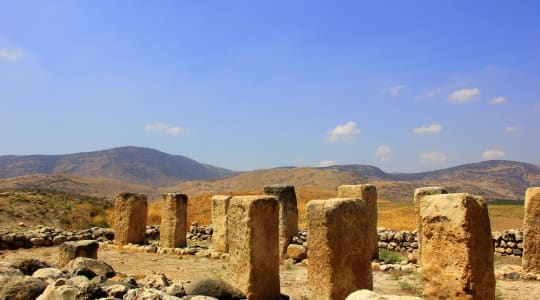
Tel Hazor is an archaeological site in northern Israel, located approximately 10 kilometers north of the Sea of Galilee. The site contains the remains of one of the largest and most important cities in the ancient Near East, dating back to the Bronze Age.
Hazor was the center of a powerful Canaanite kingdom and later became an important Israelite city. It was destroyed and rebuilt several times throughout its history, with evidence of massive destruction and rebuilding efforts found at the site.
The most impressive remains at Tel Hazor are from the Israelite period, with well-preserved city walls, gates, and a large palace complex. The palace includes a large courtyard, a throne room, and administrative offices. Other notable features at the site include a Canaanite temple, a water system, and a large storage facility.
The site was first excavated in the 1950s by renowned Israeli archaeologist Yigael Yadin, and excavations have continued intermittently since then. Today, Tel Hazor is a popular tourist destination and is recognized as a UNESCO World Heritage site. It is also significant as a site mentioned in the Hebrew Bible and has played an important role in the study of biblical archaeology.
Explore Near Tel Hazor
Discover 5 attractions, 5 cities, and 1 airport within 75km. Perfect for planning day trips, finding connecting flights, or discovering new destinations to explore during your visit.
Nearby Attractions & Places to Visit
5 destinations within 28.4km - 58.8km from your location





Nearby Cities Worth Exploring
5 destinations within 41.0km - 45.0km from your location
Airports Near Tel Hazor
1 destination within 54.1km from your location
Cross-Border Adventures Near Tel Hazor
Discover cross-border adventures near Tel Hazor. Explore neighboring countries with similar attractions and extend your travel experience across borders.




